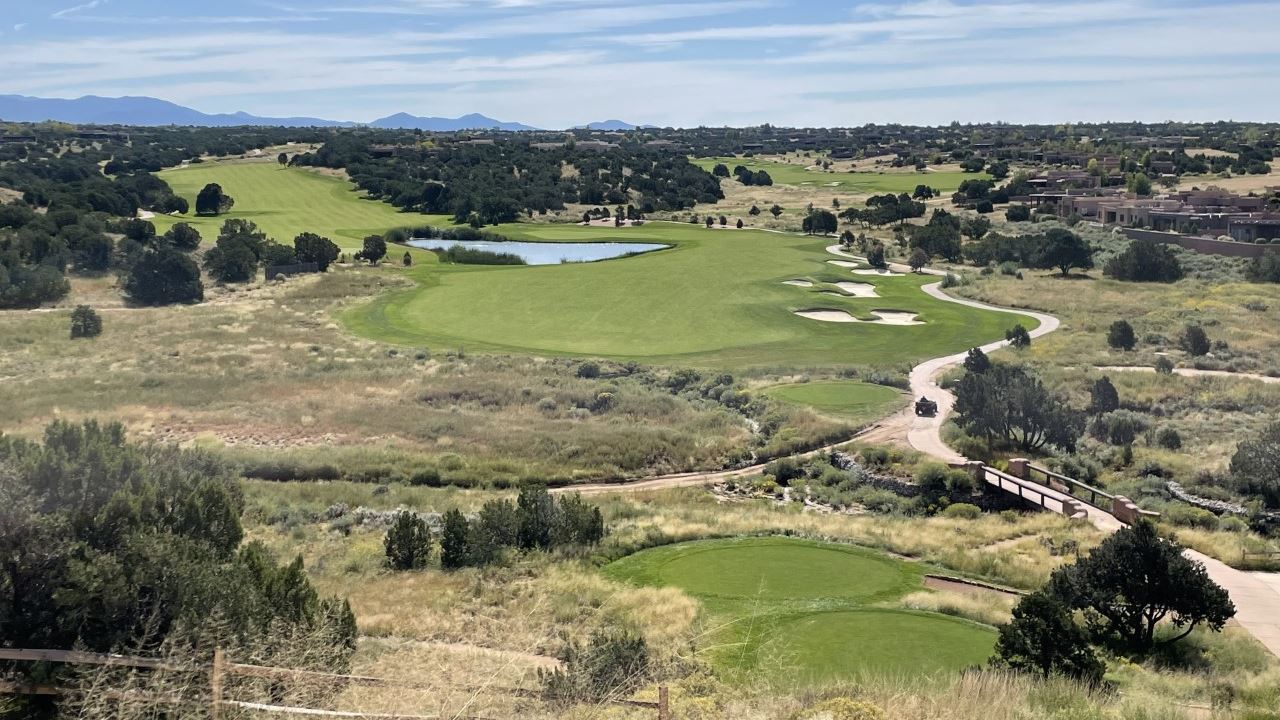Researchers at New Mexico State University are using soil moisture measurements from an Earth-orbiting satellite to investigate irrigation water conservation on large turfgrass areas, such as parks or golf course fairways, thanks to a grant from the United States Golf Association.
Bernd Leinauer, Regents Professor and turfgrass Extension specialist in the College of Agricultural, Consumer and Environmental Sciences, and Borys Drach, associate professor in the Mechanical & Aerospace Engineering department, are working to address the USGA’s research initiatives by studying the water use of four fairways on two golf courses in the team’s project, “Remote Soil Sensing of Fairways for Irrigation Water Conservation.”
“It has been documented that soil moisture sensing is a very powerful tool to determine whether irrigation is needed or not,” Leinauer explained. “However, the barrier for the use of SMS-based irrigation scheduling on large turfgrass areas has been a perception that it would take too many measurement points, either by a handheld device or from in-ground sensors, to accurately determine soil moisture.
“Limited spatial resolution of in-ground sensors impedes a more widespread use as it might require a significant number of sensors to accurately determine soil moisture in large turfgrass areas.”
The team’s proposal was to use a satellite with a sensor attached that penetrates approximately 3 to 5 centimeters into the ground and has been used to estimate surface soil moisture on large landscapes and agricultural fields.
“Such a satellite transmits microwave electromagnetic pulses and records the reflected energy from the Earth’s surface,” Leinauer said. “While the first satellite-based measurements could only be obtained at the kilometer scale, a more recent advancement in microwave remote sensing from the Sentinel satellites allows data to be collected as low as the 10-meter scale.”
The research could have a positive impact on the golf industry by substantially reducing water use and costs. The team’s proposal outlines that the study would help dispel the perception that too many sensing units are needed to accurately determine soil moisture for scheduling irrigation – thus helping to overcome the barrier to adoption of this technology.
“It is our understanding that no other researchers have investigated the use of satellite data to determine soil moisture on turfgrass and use it for irrigation scheduling,” Leinauer said.
The $208,102 grant will be dispersed between 2023 to 2025, and research results will be published in trade journals like the USGA Green Section Record and conference proceedings and be submitted for publication in peer reviewed journals.
Researchers also plan to present the results at local, national and international turf conferences and at scientific meetings.

